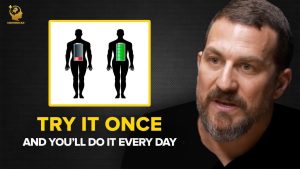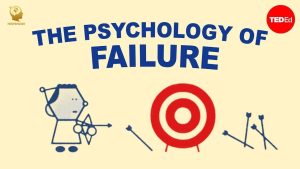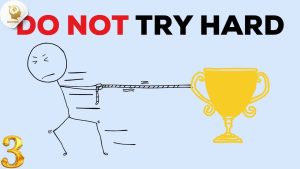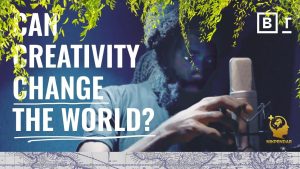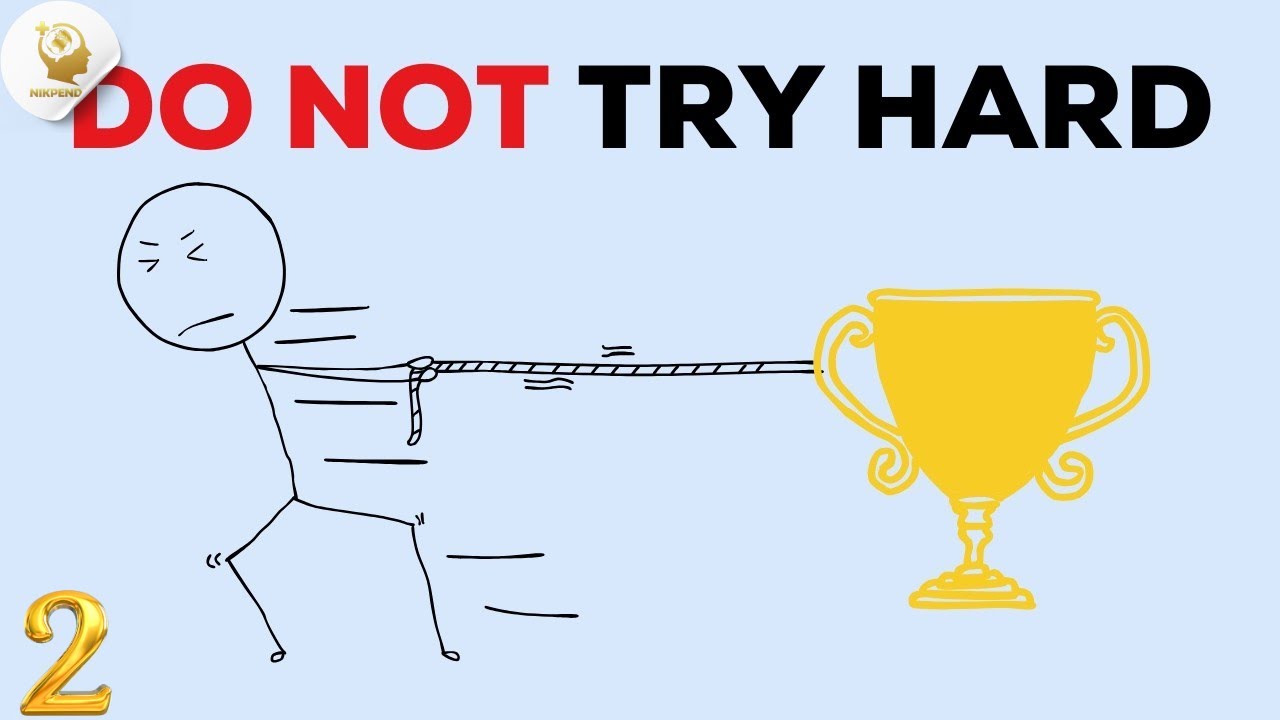
Beginner
- Task 1: Summarize a Chapter Choose one of the “Chapters” from the video. In one or two sentences, tell a partner or the class what the main idea of that chapter is. For example, “Chapter 4 is about how we cannot find happiness by chasing it directly.”
- Task 2: Give Simple Advice The speaker gives a lot of simple advice. Choose one piece of advice you heard, like “stop chasing happiness” or “focus on your vital 20%.” Tell a partner what that advice is and why you think it is a good idea.
- Task 3: Agree or Disagree The speaker makes many strong statements. Choose one of the following and tell a partner if you agree or disagree. Give a simple reason for your answer.
- “The more you try, the more you fail.”
- “You’re not making decisions. You’re rationalizing what you’ve already felt.”
Intermediate
- Task 1: Explain a Paradox The video discusses several paradoxes. Choose one of the following and explain it in your own words. Use an example from the video or from your own life to help your partner understand the idea.
- The Happiness Trap
- The 80/20 Principle
- The Control Paradox
- Task 2: Describe an Analogy The speaker uses analogies to make ideas clear. Choose one of the following and explain it to a partner. What is the analogy and what does it mean?
- Happiness is like a cat.
- Control is like holding water in your hands.
- Your brain is like a “Wikipedia page that anyone can edit.”
- Task 3: A Personal Story The speaker talks about how our brain has “biases.” Think about a time when a personal bias affected your judgment of a person or a situation. Share this story with a partner and explain what you learned from it.
Advanced
- Task 1: The Ideal Change Maker The speaker says that “The brutal truth, most of what you do is waste.” Do you agree or disagree with this statement? Prepare a short presentation to argue your point of view. Use examples from your own life and from the video to support your position.
- Task 2: Debate the Memory Chapter The speaker says our memories are not recordings, but stories that can be edited. With a partner, debate this idea. One person argues that this is a dangerous idea, while the other argues that it is a powerful tool for self-improvement. Use specific points from the video to support your claims.
- Task 3: Create a Rule for Life The video gives many rules and principles. Create your own “rule for life” that is based on the lessons from the video. Explain your rule to a partner and how it would help someone live a more intentional life.
Beginner
- Task 1: Listen for Numbers Watch the video and write down any numbers you hear.
- What percentage of decisions are emotional?
- What percentage of your daily calories does your brain burn?
- What percentage of your clothes do you wear 80% of the time?
- Task 2: Find the Simple Analogy Listen to the video and find the simple analogy the speaker uses for happiness. Write down what happiness is compared to.
- Task 3: Brain Facts Listen for the speaker’s discussion about the brain. Can you find one fact about the brain and say it out loud?
Intermediate
- Task 1: The Three Paradoxes The speaker talks about three paradoxes. Listen to the video and write down the names of these three paradoxes. Then, choose one and explain it in your own words.
- Task 2: Listen for Analogies The speaker uses several analogies to explain complex ideas. Listen and identify the analogy used for each of the following ideas. Then, explain why the analogy works.
- Our memories:
- The brain’s cleaning process:
- Task 3: Complete the Sentence Listen for the speaker’s main points and complete the following sentences.
- Happiness isn’t a destination. It’s a __________ .
- Your emotions are __________, not directives.
- 20% of what you do creates __________ of your results.
Advanced
- Task 1: Listen for Core Concepts Listen to the entire video and identify the core concepts behind the speaker’s message. Explain how the concepts of “the happiness trap,” “cognitive biases,” and the “80/20 principle” are connected.
- Task 2: Analyze the Tone Listen to the speaker’s tone of voice throughout the video. How does the tone change from the beginning to the end? What emotions or attitudes do you hear in their voice (e.g., excitement, frustration, calm)?
- Task 3: Summarize and Critique Watch the entire video. First, summarize the speaker’s main argument in 3-4 sentences. Then, provide a short critique of the speaker’s viewpoint. Do you think the speaker’s message is too simple? Is there anything they left out?
Beginner
- Task 1: Read for Key Ideas Read the video and find the main idea for each “Chapter.” In one or two simple sentences, explain what each chapter is about.
- Chapter 4 (The happiness trap):
- Chapter 5 (Your biased brain):
- Chapter 6 (The 90/10 emotional rule):
- Task 2: Find the Simple Advice Read the video and find the simple advice the speaker gives for these topics. Write down the advice in your own words.
- For happiness:
- For your decisions:
- Task 3: Read for Important Facts Read the video and find a new fact about the brain. Write down at least two facts that you learned from the video.
Intermediate
- Task 1: Explain an Analogy The speaker uses analogies to explain complex ideas. Read the video and find the analogy for happiness and for memories. Explain why each analogy works and what it means.
- Task 2: Summarize a Chapter Choose one of the following chapters and write a short summary (5-7 sentences) of its main points.
- Chapter 4 (The happiness trap)
- Chapter 5 (Your biased brain)
- Chapter 6 (The 90/10 emotional rule)
- Task 3: The 80/20 Principle Read the section on the 80/20 principle. What does this principle mean in a simple way? Give one example from the video and one example from your own life of how this principle works.
Advanced
- Task 1: Connect the Concepts The speaker talks about “the happiness trap” and “the 80/20 life principle.” Read both of these sections. Explain how these two ideas can be connected. How can focusing on your “vital 20%” lead to more happiness?
- Task 2: Analyze a Bias The speaker says: “You judge others by their actions, but yourself by your intentions.” Read the section on cognitive biases. Do you think this statement is true? Write a paragraph explaining your opinion, using a personal example to support your point.
- Task 3: The Power of Editing The speaker says that since our memories are “malleable,” we can “rewrite our story.” Read the section on memory. What does the speaker mean by this? Write a short reflection on how a person could use this idea to improve their life without lying or inventing things.
Beginner
- Task 1: Read for Key Ideas Read the video and find the main idea for each “Chapter.” In one or two simple sentences, explain what each chapter is about.
- Chapter 4 (The happiness trap):
- Chapter 5 (Your biased brain):
- Chapter 6 (The 90/10 emotional rule):
- Task 2: Find the Simple Advice Read the video and find the simple advice the speaker gives for these topics. Write down the advice in your own words.
- For happiness:
- For your decisions:
- Task 3: Read for Important Facts Read the video and find a new fact about the brain. Write down at least two facts that you learned from the video.
Intermediate
- Task 1: Explain an Analogy The speaker uses analogies to explain complex ideas. Read the video and find the analogy for happiness and for memories. Explain why each analogy works and what it means.
- Task 2: Summarize a Chapter Choose one of the following chapters and write a short summary (5-7 sentences) of its main points.
- Chapter 4 (The happiness trap)
- Chapter 5 (Your biased brain)
- Chapter 6 (The 90/10 emotional rule)
- Task 3: The 80/20 Principle Read the section on the 80/20 principle. What does this principle mean in a simple way? Give one example from the video and one example from your own life of how this principle works.
Advanced
- Task 1: Connect the Concepts The speaker talks about “the happiness trap” and “the 80/20 life principle.” Read both of these sections. Explain how these two ideas can be connected. How can focusing on your “vital 20%” lead to more happiness?
- Task 2: Analyze a Bias The speaker says: “You judge others by their actions, but yourself by your intentions.” Read the section on cognitive biases. Do you think this statement is true? Write a paragraph explaining your opinion, using a personal example to support your point.
- Task 3: The Power of Editing The speaker says that since our memories are “malleable,” we can “rewrite our story.” Read the section on memory. What does the speaker mean by this? Write a short reflection on how a person could use this idea to improve their life without lying or inventing things.

